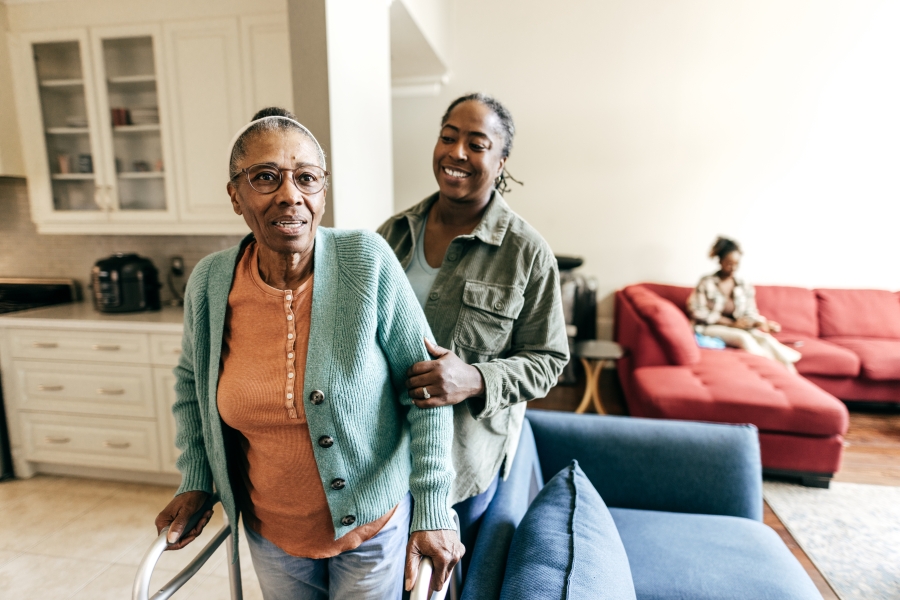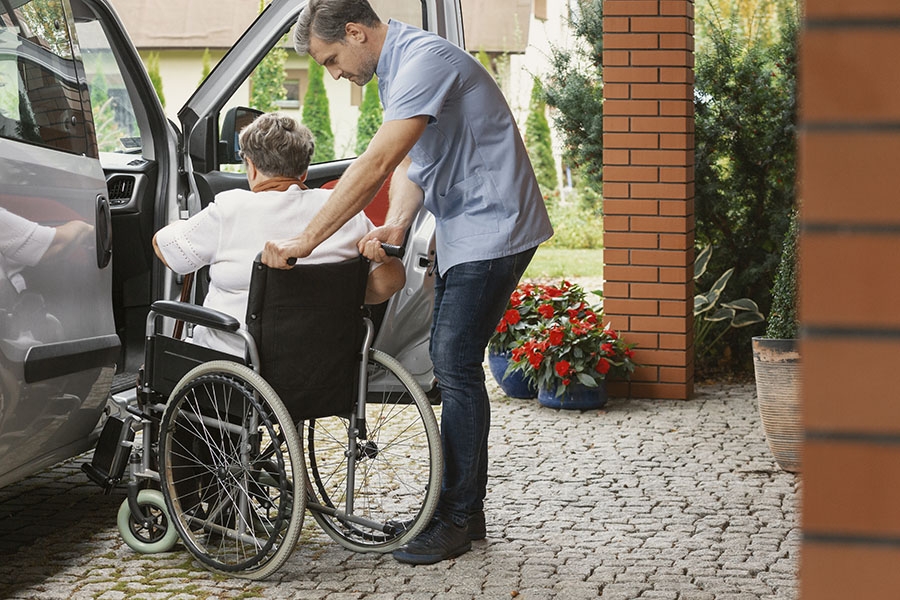Finding out that you or a loved one has Parkinson’s disease causes life to change course. It can be hard to know what to expect, since the disease progresses in different ways for different patients.
Parkinson’s disease is a progressive disease of the nervous system. Over time, patients may experience tremors, stiffness, slowness and gait instability. Parkinson’s disease can also affect other systems of the body, causing things like constipation, low blood pressure with standing and quiet voice.
Many of my patients with Parkinson’s want to know why they are having these symptoms. I explain that for reasons we do not fully understand, the cells that create a specific chemical messenger called dopamine start to die off. In the normal brain, dopamine helps to regulate the speed, size and smoothness of your movements.
I also tell my patients that there’s no way to predict exactly how their condition will change or worsen over time. Different people may experience the disease in different ways. Some patients will have very noticeable tremors early on in the disease, while others may never have tremors but struggle with soft speech and falls. In addition, the non-movement symptoms can sometimes play a bigger role than the classic Parkinson’s motor features, and the biggest problems might be constipation, sleep disturbances or depression.
But understanding how Parkinson’s advances can help patients and their doctors develop a treatment course that plans for their future.
Parkinson’s is different for everyone
Every individual’s experience with Parkinson’s is different. In general, I advise patients to not to focus too much on stages, since these don’t account for the very important non-motor symptoms. However, a general understanding of stages can give insight to treatment decisions. Neurologists typically break this down into five stages:
- Stage 1 is the mildest form where symptoms only affect one side of the body. With the exception of prominent tremor, most patients don’t even notice the changes that are occurring during this stage. Patients in this stage are often not bothered by their symptoms and don’t require medications. At this stage I will often recommend exercise or “pre-hab” with our physical and occupational therapists to promote physical exercise.
- Stage 2 is also fairly mild but now involves both sides of the body. Patients may start to be bothered by symptoms but are not impaired or unable to do their normal tasks. Patients at this stage generally respond well to medications and sometimes can get close to normal with the right treatments. During stage 1 and 2, medications can make people feel like they don’t have a degenerative disease at all.
- Stage 3 is where symptoms start to become more severe, particularly when it comes to gait and balance. They may require more rehabilitation or start to use assistive devices to avoid falls. They may need some help with fine motor tasks like buttoning buttons. Medications may become less effective. This may be the stage at which advanced therapies, such as deep brain stimulation, may be considered.
- Stage 4 is where most patients would need some sort of assistive device such as a walker to get around. Patients are likely to need a caregiver for tasks such as bathing, cooking and driving. Medications are still helpful, but may need to be decreased due to side effects or spread out in small doses throughout the day.
- Stage 5 is where the patient is no longer able to ambulate and would require a wheelchair to get around. The patient is reliant on a caregiver for most care tasks.
Can Parkinson’s be slowed or stopped?
At the current time there is no medication treatment that can slow or stop the progression of Parkinson’s disease. The medications and surgeries we offer will alleviate symptoms, but will not change the overall course. There is a lot of research in this area and I very much hope that someday the answer to this question will be different, but right now there is no cure.
There is, however, some good evidence to suggest that cardiovascular exercise can slow the progression of Parkinson’s disease. The exact amount of exercise is not entirely known, but in general I recommend a goal of 20 minutes of an activity that can get your heart rate up five times per week. This can be a lofty goal for someone who doesn’t already have an exercise routine, so I encourage people to start by just increasing their current activity level. There are some great exercise programs for Parkinson’s patients such as Rock Steady Boxing and Dance for PD. If you’re not sure where to start or how to stay motivated, I refer my patients to physical therapy for guidance. The therapists can help you plan a program and provide tips on how to exercise safely when balance becomes more of a challenge.
Beyond that, general brain health means better Parkinson’s health. Eating a well-balanced diet that minimizes processed foods, staying cognitively engaged by keeping up social interactions and controlling vascular risk factors like blood pressure and cholesterol will help keep your whole brain healthy enough to help compensate for the parts affected by Parkinson’s.
Navigating the emotional challenges
The stages of Parkinson’s disease do not account for non-motor symptoms that can have a huge effect on a patient’s life. Many Parkinson’s patients struggle with anxiety, depression or apathy. Treating depression and finding ways to enjoy life, even with some disability, can be as important to a positive outcome as managing tremors or stiffness.
Just like with non-Parkinson’s depression there are a lot of ways to treat the symptoms, including watchful waiting, mindfulness, counseling and medications. Support groups and networking with other Parkinson’s patients can also provide a way of dealing with the challenges unique to the disease.
Because many parts of Parkinson’s care require the help of another person, supporting our caregivers is a critical part of Parkinson’s treatment. Caregiver support groups, respite and validation are a fundamental part of my treatment plans.
Start seeking help
Temple’s Movement Disorders Program is dedicated to improving the quality of life for those with movement disorders, including Parkinson’s. Schedule an appointment online with a neurologist or call 800-TEMPLE-MED.
Helpful Resources
Looking for more information?


